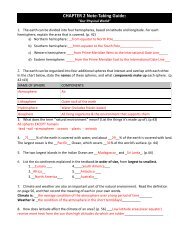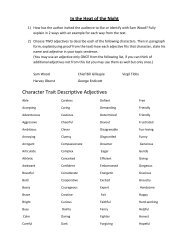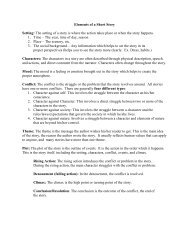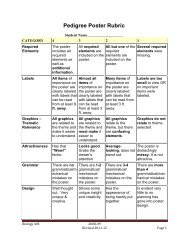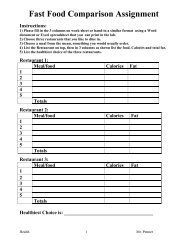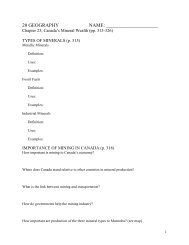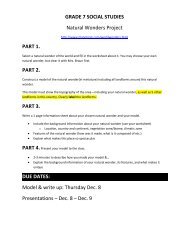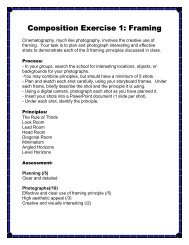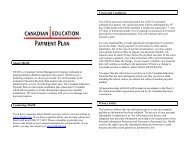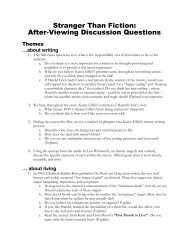Chapter 21 The Business of Farming - schs
Chapter 21 The Business of Farming - schs
Chapter 21 The Business of Farming - schs
You also want an ePaper? Increase the reach of your titles
YUMPU automatically turns print PDFs into web optimized ePapers that Google loves.
<strong>Chapter</strong> <strong>21</strong><br />
<strong>The</strong> <strong>Business</strong><br />
<strong>of</strong> <strong>Farming</strong>
Facts about <strong>Farming</strong> in Canada<br />
* According to Agriculture Canada, the agribusiness<br />
sector is one <strong>of</strong> Canada's top five<br />
industries, and accounts for about 8.5 percent <strong>of</strong> its<br />
Gross Domestic Product.<br />
* Canada is a major producer and exporter <strong>of</strong><br />
agricultural products, including wheat, coarse grains,<br />
and oilseeds.<br />
* Drought in Alberta and Saskatchewan during the<br />
2001 and 2002 growing seasons decreased wheat,<br />
coarse grain, and oilseed production substantially
Did You know?<br />
• Every year Canada exports more than<br />
24 billion dollars worth <strong>of</strong> agriculture<br />
and food products to more than 180<br />
countries around the world.<br />
Exports represent about one-half <strong>of</strong> all agricultural<br />
production, either in terms <strong>of</strong> direct sale or an input into a<br />
product which is eventually exported.
Numbers to Ponder<br />
• From 1992 to 2002, the value <strong>of</strong><br />
confectionery and snack food<br />
shipments from Canada has grown<br />
from $1.4 billion to 3 billion and $900<br />
million to $1.7 billion respectively.<br />
• Canada is the world's 6th largest fish<br />
and seafood exporter, exporting more<br />
than 75 per cent <strong>of</strong> its fish and<br />
seafood production to more than 80<br />
countries. Total exports reached a<br />
record $4.7 billion in 2002.
<strong>The</strong> Mighty Potatoe<br />
• Canada makes 85 per<br />
cent <strong>of</strong> the world's<br />
maple syrup, producing<br />
almost 35,000 tonnes<br />
valued at $164 million in<br />
2002. Quebec leads<br />
Canadian production <strong>of</strong><br />
maple syrup with 32,495<br />
tonnes and sales<br />
estimated at $147<br />
million.<br />
• <strong>The</strong> potato is the<br />
most valuable<br />
vegetable crop<br />
in Canada,<br />
accounting for<br />
63% <strong>of</strong> all<br />
vegetable farm<br />
cash receipts or<br />
$952 million in<br />
2002.
7 Land Classes<br />
• Class Description<br />
• 1- Soils in this class have no significant limitations in use for crops.<br />
• 2- Soils in this class have moderate limitations that restrict the<br />
range <strong>of</strong> crops or require moderate conservation practices.<br />
• 3- Soils in this class have moderately severe limitations that restrict<br />
the range <strong>of</strong> crops or require special conservation practices.<br />
• 4- Soils in this class have severe limitations that restrict the range<br />
<strong>of</strong> crops or require special conservation practices.<br />
• 5- Soils in this class gave very severe limitations that restrict their<br />
capability in producing perennial forage crops, and improvement<br />
practices are feasible.<br />
• 6- Soils in this class are capable only <strong>of</strong> producing perennial forage<br />
crops, and improvement practices are not feasible.<br />
• 7- Soils in this class have no capacity for arable culture or<br />
permanent pasture.<br />
• 0- Organic Soils (not placed in capability classes)




